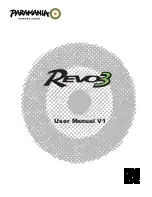
BushCADDY LSA Pilot Operating Handbook
Rev.03 5 March, 2008
Page 43 of 52
SECTION 9
SAFETY TIPS
7.11
Learn to trim for take off so that only a very light back pressure on the stick is required
to lift the aircraft off the ground.
7.12
The best speed for take off is about 40 – 50 mph under normal conditions. Trying to
pull the aircraft off the ground at too low airspeed decreases the controllability of the
aircraft in the event of an engine failure.
7.13
Before starting the engine, check that all radio switches, light switches are in the off
position so as not to create an overload situation when the starter is engaged.
7.14
Strobe lights should not be operating when flying through overcast or clouds, since
reflected light can produce special disorientation. Do not operate strobe lights when
taxiing in the vicinity of other aircraft.
7.15
In an effort to avoid accidents pilots should obtain and study safety related information
made available in FAA publications such as Regulations, Advisory Circulars Aviation
News, AIM and safety aids.
7.16
The shape of the wing fuel tanks is such that in certain manoeuvres the fuel may move
away from the tank outlets. If the outlets are uncovered, fuel flow will be interrupted
and temporary loss of power may result. Pilots can prevent inadvertent uncovering of
the outlets by avoiding manoeuvres which could result in uncovering the outlets.
Prolonged slips or skids which result in excess of 2000 ft of altitude loss, or other
radical or extreme manoeuvres which can cause uncovering of the fuel outlets must be
avoided as fuel flow interruption may occur when the tank being used is not full.
7.17
While taxiing aircraft in taildragger configuration, make small “S” turns to aid forward
visibility and avoid danger of collision with other aircraft. Always verify wing
clearance when taxiing on ramp in the vicinity of other aircraft and objects such as
buildings.
7.18
It is imperative that a full pilot proficiency check ride be undertaken with an
experienced pilot prior to flying the BushCaddy for the first time.
7.19
NEVER
smoke around the vicinity of aircraft!
7.20
After refuelling stops, always check oil level before take off.
7.21
Thoroughly brief your passengers on emergency procedures, seatbelt operations and
proper door locking and unlocking techniques. Make sure that your passengers are
made aware that they will be flying in a aircraft that has not been certified to







































